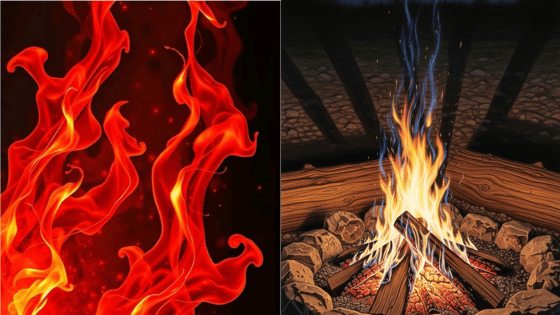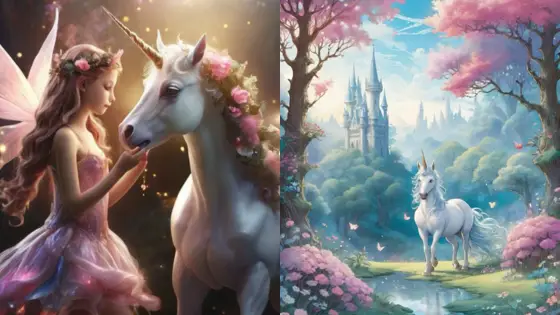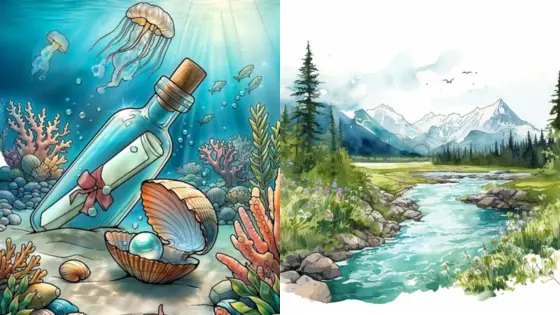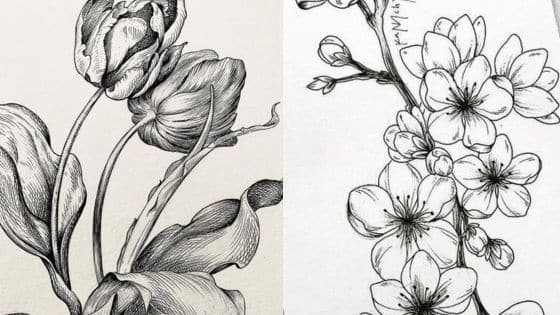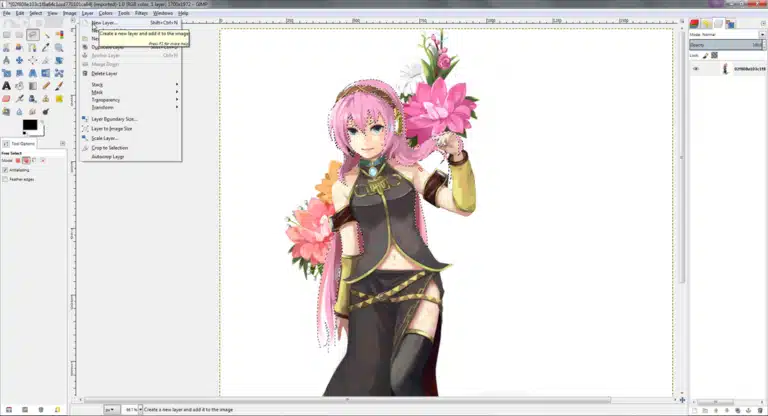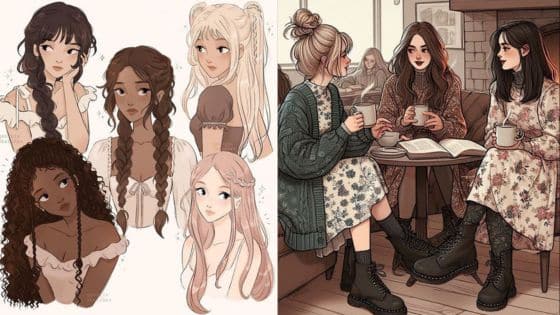Creating a portfolio that showcases your artistic abilities can feel overwhelming, especially when staring at a blank page. Whether you’re applying to art school, seeking freelance work, or building your professional presence, the drawings you include will make a powerful first impression. A well-curated drawing portfolio demonstrates not only your technical skills but also your creative thinking, conceptual abilities, and personal artistic voice.
Finding the right drawing ideas to include in your portfolio can transform it from ordinary to exceptional. Your portfolio should tell a story about who you are as an artist while highlighting your strongest work. Consider including a mix of observational drawings, creative concept pieces, and works that demonstrate your unique style and perspective.
Remember that art schools and potential clients aren’t just looking for polished final products—they want to see your process, your ability to solve visual problems, and your potential for growth. Including sketches, studies, and work that shows your development can make your portfolio more dynamic and give viewers insight into how you think as an artist.



Key Takeaways
- Select portfolio pieces that demonstrate both technical skill and creative thinking while reflecting your unique artistic voice.
- Include a variety of drawing styles, subject matter, and approaches to showcase your versatility and depth as an artist.
- Document your creative process with sketches and studies to give viewers insight into your artistic development and problem-solving abilities.
Understanding What Makes a Strong Portfolio
A strong art portfolio showcases not just your technical abilities, but also communicates your unique perspective and artistic journey. It balances professionalism with personality while demonstrating your commitment to your craft.
Key Elements of a Good Art Portfolio
Your portfolio should tell a cohesive story about who you are as an artist. Include 10-15 of your strongest pieces that demonstrate range without overwhelming viewers. Quality always trumps quantity!
Make sure your presentation is impeccable—whether digital or physical. High-quality photographs or scans of your work are essential, with consistent lighting and accurate color representation.
Include a well-written artist statement that explains your themes, influences, and techniques. This adds depth to your portfolio and helps reviewers understand your artistic vision.
Organization matters tremendously. Arrange your work thoughtfully, perhaps chronologically or thematically, to show your development or the connections between pieces.



Showcasing Skills and Style
Your portfolio should highlight your technical abilities across different mediums, subjects, or approaches relevant to your field. Demonstrate your foundational skills like drawing, composition, and color theory.
Show your unique artistic voice! Your style is what sets you apart from others. Don’t be afraid to include experimental pieces alongside more traditional work if they represent your artistic direction.
Balance is key:
- Technical mastery
- Conceptual thinking
- Versatility
- Signature style
Process work can be valuable too—include sketches, studies, or work-in-progress images that show your thought process and problem-solving abilities.
Demonstrating Creativity and Personality
Let your passion shine through your work selection. Choose pieces that excite you and that you enjoy discussing—this enthusiasm will be evident to viewers.
Include projects that demonstrate your creative thinking and unique approach to challenges. How do you solve visual problems? What makes your perspective different?
Consider incorporating personal projects alongside commissioned or assigned work. These self-directed pieces often reveal your authentic interests and motivations as an artist.
Remember that reviewers want to see your potential as much as your current abilities. Show growth and experimentation that hints at where your work might go in the future.
Be authentic rather than trying to create what you think others want to see. A genuine portfolio that truly represents you will connect more deeply with the right opportunities.



Fundamental Drawing Ideas for Portfolios
Building a strong portfolio requires mastering certain fundamental drawing concepts that showcase your technical abilities and creative vision. These core elements will help you create a well-rounded collection that demonstrates your skills to potential clients, employers, or schools.
Observational Drawing and Life Studies
Observational drawing forms the backbone of any strong art portfolio. You should include at least 2-3 examples of your ability to draw from direct observation. Life drawing (sketching human figures) demonstrates your understanding of anatomy, proportion, and form.
Try setting up weekly practice sessions where you draw people in cafés, parks, or dedicated life drawing classes. Focus on capturing different poses – some quick gesture drawings (30 seconds to 2 minutes) and some longer studies (20+ minutes).
Don’t shy away from challenging angles or foreshortening! These technical challenges show your problem-solving abilities. Include drawings that showcase your understanding of light and shadow on the human form.
Remember to vary your subjects beyond just people – animals, architecture, and landscapes all demonstrate your observational skills in different contexts.
Still Life and Value Exploration
Still life arrangements allow you to showcase your understanding of value (lightness and darkness), texture, and material properties. Set up interesting groupings of objects with varying surfaces – something shiny, something transparent, something textured.
Try creating a dramatic lighting setup with a single strong light source to practice creating deep shadows and highlights. This demonstrates your understanding of how light behaves on different materials.
Experiment with different drawing media for your still life studies. Charcoal lets you explore the full value range from deep black to bright white. Colored pencils showcase your understanding of color theory alongside value.
Include at least one detailed still life that demonstrates your patience and attention to detail. This might take several sessions to complete, but the results will strengthen your portfolio significantly.
Perspective and Composition Practice
Strong perspective skills show that you understand how to create convincing three-dimensional spaces on a two-dimensional surface. Include drawings that demonstrate one-point, two-point, and if you’re comfortable, three-point perspective.
Practice drawing interior spaces, city streets, or invented architectural elements. These subjects naturally showcase your understanding of perspective while allowing creative expression.
Composition—how you arrange elements within your frame—reveals your design sensibilities. Try creating drawings with different compositional approaches: rule of thirds, centered compositions, dynamic diagonals, or radial designs.
Scale is another important element to explore. Create drawings that include objects of dramatically different sizes to show your ability to convey scale relationships. This might be tiny objects next to large ones or showing how figures relate to their environment.



Creative and Thematic Portfolio Concepts
Building a portfolio that stands out requires thoughtful curation and innovative presentation strategies. Thematic approaches can transform your collection of work into a cohesive narrative that showcases your unique artistic voice.
Illustration and Narrative Artworks
Consider organizing your illustrations around a central theme or story to create a memorable portfolio experience. You might develop a character and show their journey through different scenarios, or illustrate a short story from beginning to end.
Creating a series of related works demonstrates your ability to maintain consistent style while exploring variations on a theme. This approach is particularly effective for graphic design and illustration positions.
Try including process work alongside finished pieces. Showing your sketches, color studies, and iterations gives viewers insight into your creative thinking and problem-solving abilities.
For fine arts portfolios, consider arranging works to show your progression or exploration of a particular concept, technique, or subject matter. This creates a visual conversation between pieces that can be more impactful than unrelated works.
Incorporating Animation and Motion
Even if you’re primarily a static visual artist, adding elements of motion can make your portfolio more engaging. Simple GIFs showcasing the evolution of your illustrations can demonstrate your thinking process in a dynamic way.
Consider creating short animation loops of your characters or designs. These don’t need to be complex—even subtle movements can bring your work to life and showcase additional skills.
Time-lapse recordings of your creative process make compelling portfolio additions. They reveal your technical approach while creating a narrative around each piece.
If you’re proficient in motion graphics, integrate them into your portfolio navigation. Animated transitions between works can create a cohesive viewing experience that reflects your design sensibilities.
Digital portfolios allow you to experiment with interactive elements. You might include hover effects or clickable components that reveal additional information about your work process.
Design Ideas from Pop Culture
Drawing inspiration from current pop culture phenomena can showcase your awareness of trends and ability to create work that resonates with contemporary audiences.
Try reimagining iconic characters or scenes in your unique style. This demonstrates your creative interpretation skills while providing familiar reference points for viewers.
Consider creating design concepts for fictional brands from popular movies or TV shows. These speculative projects show potential clients your ability to understand and extend established visual identities.
Fan art with a professional twist can be portfolio-worthy when you approach it with thoughtful design principles and technical excellence. It shows your passion while demonstrating your skills.
Look for opportunities to blend pop culture references with your personal artistic voice. The most successful pieces will balance recognizable elements with your unique perspective and style.



Expanding Your Portfolio: Mixed Media and Digital
Combining traditional and digital techniques can breathe new life into your portfolio while showcasing your versatility as an artist. Exploring different mediums allows you to demonstrate a broader range of skills that will impress potential clients, schools, or employers.
Digital Portfolio Projects
Creating digital artwork opens up endless possibilities for your portfolio. Try digital painting using software like Procreate or Photoshop to show your adaptability across mediums. You can experiment with character design, concept art, or digital landscapes that complement your traditional work.
For art students looking to strengthen their ECAs (extracurricular activities), participating in online challenges like Inktober or creating a series of digital illustrations based on a theme can build your portfolio quickly.
Don’t worry if you’re new to digital art! Start with simple projects like digitizing your traditional sketches or adding digital elements to scanned artwork. This transition shows your willingness to learn and adapt to modern art practices.
Photography and Integrating Color
Photography can be a powerful addition to your drawing portfolio, serving both as finished work and reference material. Try photographing interesting textures, lighting situations, or compositions that inspire your drawings.
Experiment with color theory by creating color studies based on your photographs. This demonstrates your understanding of how light and color interact in real-world settings.
Consider creating mixed media pieces that combine your drawings with photographic elements. You might draw over printed photographs or incorporate photographic textures into traditional drawings.
For a cohesive portfolio, develop a consistent color palette across several pieces. This shows your ability to maintain visual harmony while working with different mediums and subjects.
Experimenting with Texture and Materials
Adding unconventional materials to your drawings can make your portfolio stand out immediately. Try incorporating fabric scraps, pressed leaves, or textured papers to create tactile interest in your work.
Document your experimental process through photos or videos to include in your digital portfolio. This gives viewers insight into your creative thinking and problem-solving abilities.
Create a series that explores a single subject through different textural approaches. For example, draw the same object using smooth graphite, rough charcoal, and collaged materials to demonstrate your versatility.
Don’t be afraid to combine digital and physical textures. You can scan handmade textures and incorporate them into digital pieces, or print digital work and add physical elements afterward.
Remember that texture experiments don’t need to be large-scale works—even small studies showing different approaches can impress portfolio reviewers with your willingness to explore and innovate.
Showcasing Your Work and Standing Out
Creating a compelling presentation of your artwork is just as important as the art itself. How you showcase your pieces can dramatically impact how they’re received by viewers, clients, and industry professionals.
Preparing for Art Competitions and Exhibitions
When preparing for exhibitions and competitions, carefully select pieces that tell a cohesive story. Choose 5-7 of your strongest works that demonstrate your unique style and technical abilities.
Present your work professionally with proper framing, lighting, and spacing. Clean, simple frames often work best as they don’t distract from your art. For 3D works, consider using pedestals or display cases that complement your pieces.
Write clear, concise artist statements (keep them under 200 words) that explain your creative process and inspiration without being pretentious. Include details about your technique or materials if they’re unique to your work.
Practice talking about your art beforehand. Prepare a 30-second explanation of each piece for when viewers ask questions. Being able to discuss your work confidently can make a lasting impression!
Building an Impressive Online Portfolio
Your online portfolio is often your first impression with potential clients and galleries. Choose a platform that best displays your work – Squarespace and Wix offer artist-friendly templates with minimal setup required.
Keep your portfolio focused and organized. Create separate galleries for different styles or mediums, making navigation intuitive. Include 15-20 of your best pieces rather than everything you’ve ever created.
Popular Portfolio Website Options:
| Platform | Best For | Price Range |
|---------------|--------------------------------|----------------|
| Squarespace | Polished, minimal presentations| $12-26/month |
| Wix | Customizable, beginner-friendly| $14-39/month |
| WordPress | Complete customization control | $4-45/month |Ensure your images are high-quality and properly lit. Consider adding detail shots for intricate work. Mobile optimization is crucial – test how your portfolio looks on phones and tablets.
Update your portfolio regularly with new work. Fresh content shows you’re actively creating and evolving as an artist.
Highlighting Awards, Resume, and Inspirations
Your artistic achievements and background add credibility to your portfolio. Create a dedicated page for your resume that includes exhibitions, awards, education, and relevant experience.
Don’t just list awards—tell brief stories about what you learned from competitions or how they influenced your work. This personal touch helps viewers connect with your journey.
Include a thoughtful “About” section that shares your inspirations and artistic philosophy. Mention artists who influence you, books that inspire your process, or experiences that shape your perspective.
Consider adding testimonials from clients, instructors, or gallery owners. These third-party endorsements can significantly boost your credibility with new audiences.
If you teach workshops or give talks, highlight these experiences too. They demonstrate your expertise and commitment to the artistic community.
Portfolio Tips for Specific Goals and Audiences
Your portfolio should be tailored to your specific career aspirations and target audience. Different contexts require different approaches to showcase your work effectively and make the right impression on viewers.
Impressing Art Colleges and Fine Arts Programs
Art college admissions officers look for technical skill, creativity, and potential for growth. Include 15-20 pieces that demonstrate range while maintaining a cohesive vision.
Show your process! Colleges love to see your thinking through sketchbooks and development work. This gives them insight into how you approach creative problems.
Top tips for college art portfolios:
- Include observational drawings from life (not just photographs)
- Showcase diverse media and techniques
- Demonstrate understanding of composition and color theory
- Include personal projects that reveal your unique voice
Research each program’s specific requirements carefully. Some fine arts programs value conceptual work, while others emphasize technical mastery. Tailor your selections accordingly.
Ask for feedback from teachers or mentors before submission. Fresh eyes can spot weaknesses you might miss.
Crafting a Professional Portfolio for Creative Jobs
When seeking design or illustration jobs, focus your portfolio on the industry you’re targeting. Quality trumps quantity – 8-12 outstanding pieces are better than 20 mediocre ones.
Research companies before applying and customize your selections. If applying to a children’s book publisher, highlight your storytelling abilities and child-friendly style.
Essential components for job-seeking portfolios:
- Strong opening and closing pieces (viewers remember these most)
- Clear demonstration of relevant skills
- Brief context for each project
- Contact information and professional social media links
Consider creating different versions of your portfolio for different job types. A UX design position requires different examples than an editorial illustration role.
Include collaborative projects when possible. Employers want to know you can work well with teams and clients.
Game Design and Animation Industry Portfolios
Game and animation studios look for specialized skills within your broader artistic abilities. For character design, include turnarounds, expression sheets, and motion studies.
Technical knowledge is crucial. Include examples showing your understanding of rigging, texturing, or animation principles depending on your specialty.
Game design portfolio must-haves:
- Character concepts with clear silhouettes
- Environment designs with mood and storytelling elements
- Prop designs with attention to functionality
- Understanding of perspective and scale
For animation portfolios, include short clips demonstrating the 12 principles of animation. Quality of movement matters more than fancy rendering.
Show your ability to work within established styles. Include fan art or style studies based on existing games to demonstrate adaptability.
Professional Artists’ Portfolio Examples
Successful professional artists typically maintain different portfolio versions for different contexts. Gallery submissions differ from client-facing work.
Study portfolios of artists you admire in your field. Note how they organize their work and present their unique style.
Examples worth examining:
- James Gurney: Combines imaginative concepts with technical excellence
- Loish: Showcases consistent style with varied applications
- Artstation featured portfolios: Industry standard for digital artists
Your artist statement should complement your visual work without explaining it. Keep it concise and authentic to your voice.
Consider the viewing context. Digital portfolios need fast-loading images and mobile compatibility, while in-person reviews benefit from physical examples showing texture and scale.
- 4shares
- Facebook0
- Pinterest4
- Twitter0
- Reddit0








